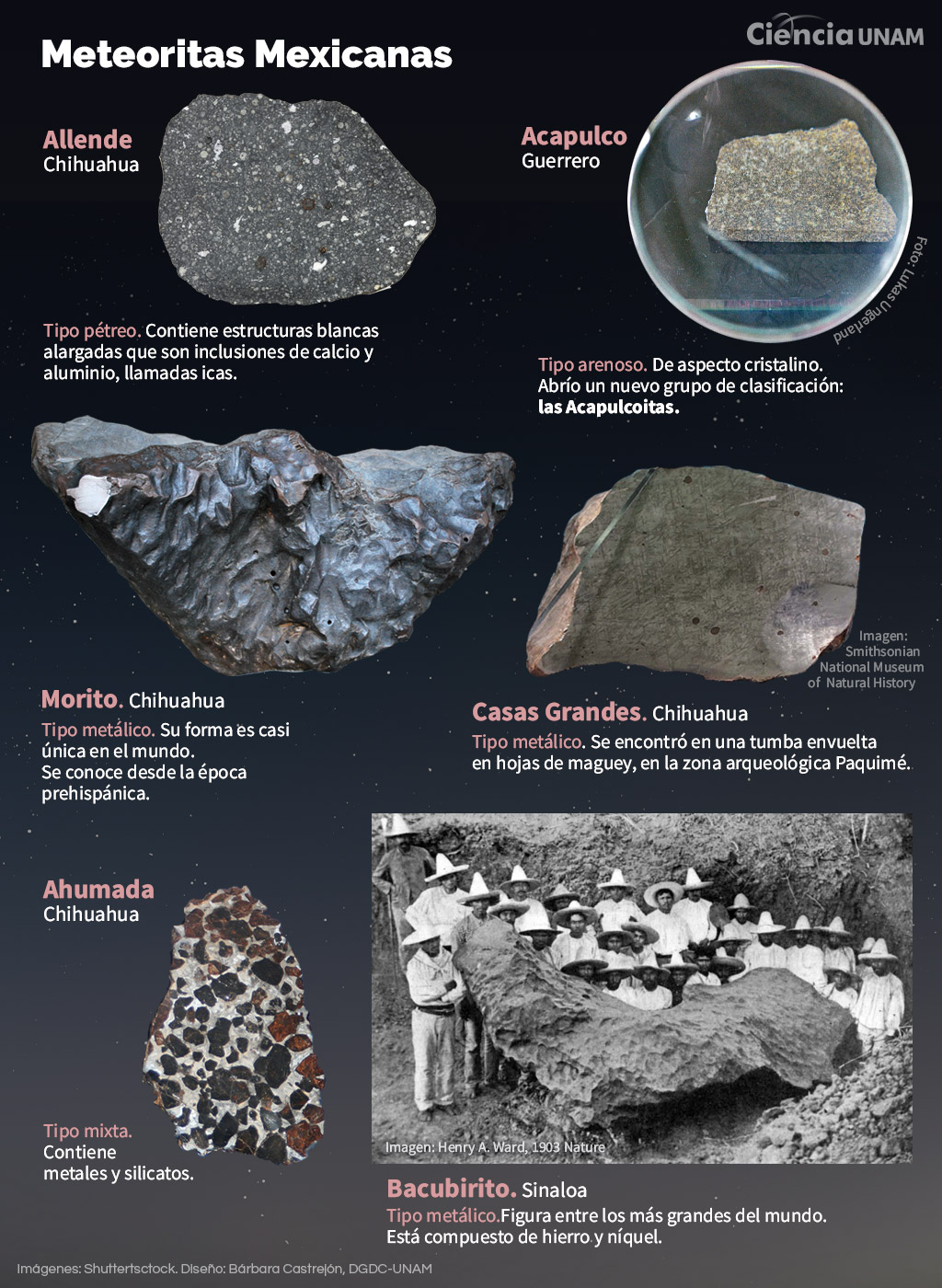Meteorites are extraterrestrial rocks that survive after passing through Earth’s atmosphere and falling to the surface. It’s constantly falling, maybe tons of it entering our planet, but most of it gets stuck on entry and only arrives in the form of meteoric iron and much of it ends up in places where it can’t be recovered.
In 1492, the year Christopher Columbus discovered America, a meteorite was observed falling in the community of Ensisheim, northeastern France on the border with Germany. Before this event it was not known that they came from outer space, and many people who witnessed their fall wanted to take a piece of them. Finally, the church protected it because it was something that came down from heaven.
Many years later, the Frenchman Antoine Lavoisier pointed out that meteorites are formed as a result of the impact of lightning. In 1794, the German physicist Ernst Khaldny was the first to put forward the hypothesis that these rocks had an extraterrestrial origin, but “official science” at that time did not accept it. Jean-Baptiste Biot, in a report published in 1803, confirmed the extraterrestrial origin by studying the L Aigle meteorite that fell in France.
Today, they are known to be fragments of an asteroid or comet, which have been in outer space for thousands of years until they reach our surface, thus providing us with information about the formation of the solar system.
Meteorites are important because they allow us to directly study the chemical and mineral composition of objects in the solar system, as well as better understand the phenomena that gave rise to them, the Earth and other planets.
There are currently more than 81,000 meteorites registered by the International Meteor Society, which is responsible for registering and certifying meteorite authenticity. They have a bulletin where you can consult each one registered on the ground.
Mexican meteorites
In 1969, as the world was preparing to see humans land on the moon, a large meteorite fell in Mexico in Allende, Chihuahua. It is the oldest recorded rock in the world, and is even used to date the age of the Sun. By analyzing its composition, geologists have found organic materials, micro-diamonds and fullerenes.
“The Allende has these elongated white structures that you see there, which are icicles, containing calcium and aluminium; “They are spinel-type minerals, which are very heat-resistant and form at high temperatures,” the doctor explains. Adela Margarita Reyes Salasfrom the Institute of Geology UNAM.
Another meteorite that fell into Mexican territory and which marked a turning point in the study of these rocks is Acapulquite. Around 1976, Mr. Leodegario Cárdenas arrived in Mexico City from Acapulco, in the state of Guerrero, bringing with him a rock that was black on the outside and white on the inside.
Dr. Arcadio Poveda from the Institute of Astronomy obtained the rock and after subjecting it to various processes, they classified it as a meteorite that opened a new classification group, the Acapulcoites type, which is the highly crystalline sandy type.
The Ahumada meteorite is a mixed type; In the Institute of Geology there are fragments about 2 cm in size. It was found that it is composed of a mineral substance, silicates.
The Pacoperio meteorite, which fell in Pacoperito in the state of Sinaloa, was considered at the time to be the largest in the world, although another meteorite of a larger size currently exists.
Also famous is the Moreto meteorite, currently housed in the UNAM Mining Museum, located in the historic center of Mexico City. For many years, it was used by the indigenous people of the time as a marker for walking or reaching other places. It is metallic and because of its shape it is almost unique in the world.
The meteorite from Casas Grandes (Chihuahua) was found in a grave wrapped in maguey leaves. It is metal and very long, with a diameter of about 1 meter and 50 cm. It is on display at the Smithsonian Museum of Natural History in the United States.
National assets
In Mexico, the main collections of meteorites have been found at the Institute of Geology, the Institute of Astronomy, the Palacio de Minería (National Autonomous University of Mexico), the Luis Enrique Aero Planetarium (National Polytechnic Institute), the Scientific Research Institute of Torreón, Coahuila and the College Engineering University of Chihuahua.
Its objectives are to update the collection’s catalog, preserve, protect and care for it, introduce it at academic events, and prepare scientific articles.
To date, three meteorite catalogs have been prepared and updated. The first was made in 1889, by engineer Antonio del Castillo, who reported the presence of 19 iron meteorites and 7 stone meteorites. Years later, a second catalog prepared by engineer José Haro appeared, displaying 81 specimens, 27 of which were iron and 8 stone.
Later, teacher Gerardo Sánchez Rubio reported the existence of 90 Mexican meteorites, many of which are not actually found in our country. The most recent Bulletin of the International Meteor Society reports 118 records for Mexico.
In 2004, the General National Assets Law was passed, which seeks to protect these extraterrestrial rocks, to prevent them from being taken out of the country.

“Creator. Devoted pop culture specialist. Certified web fanatic. Unapologetic coffee lover.”

